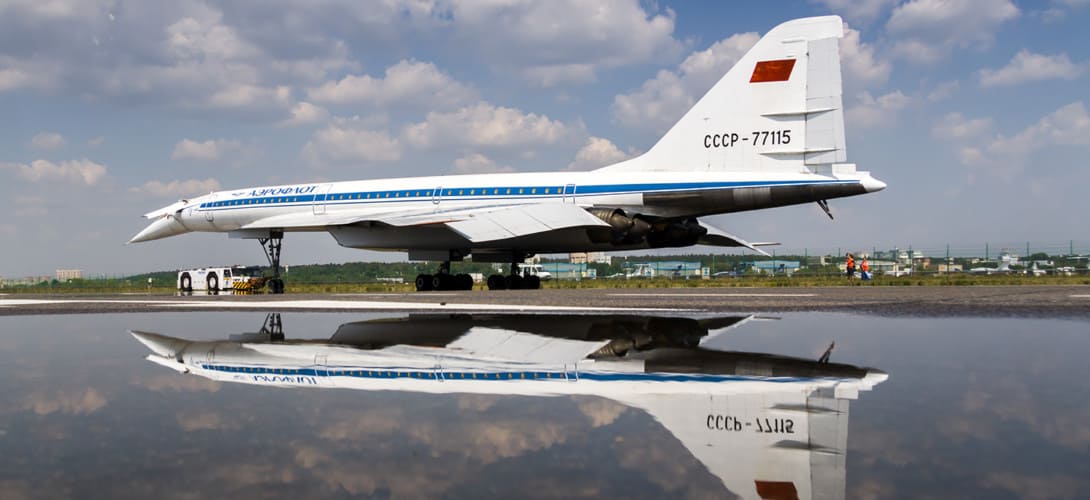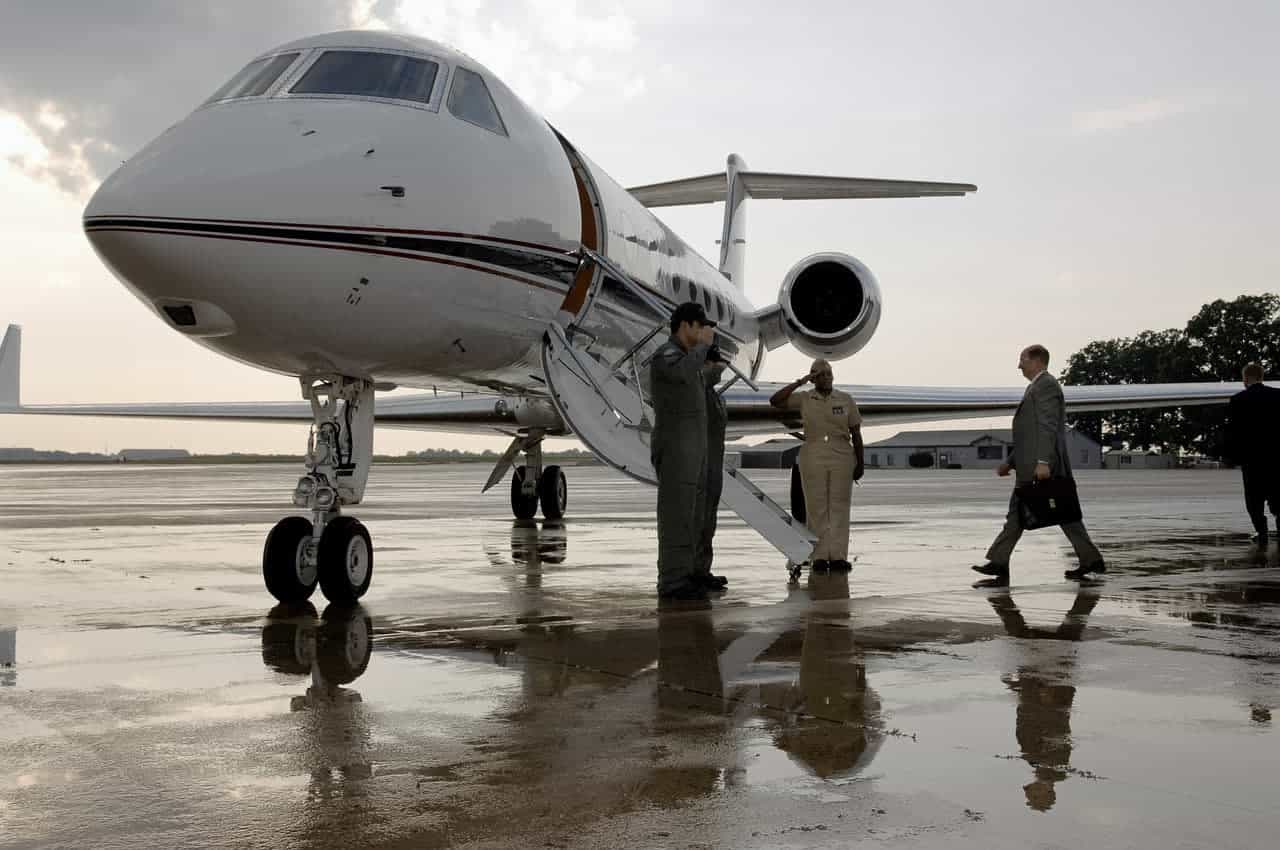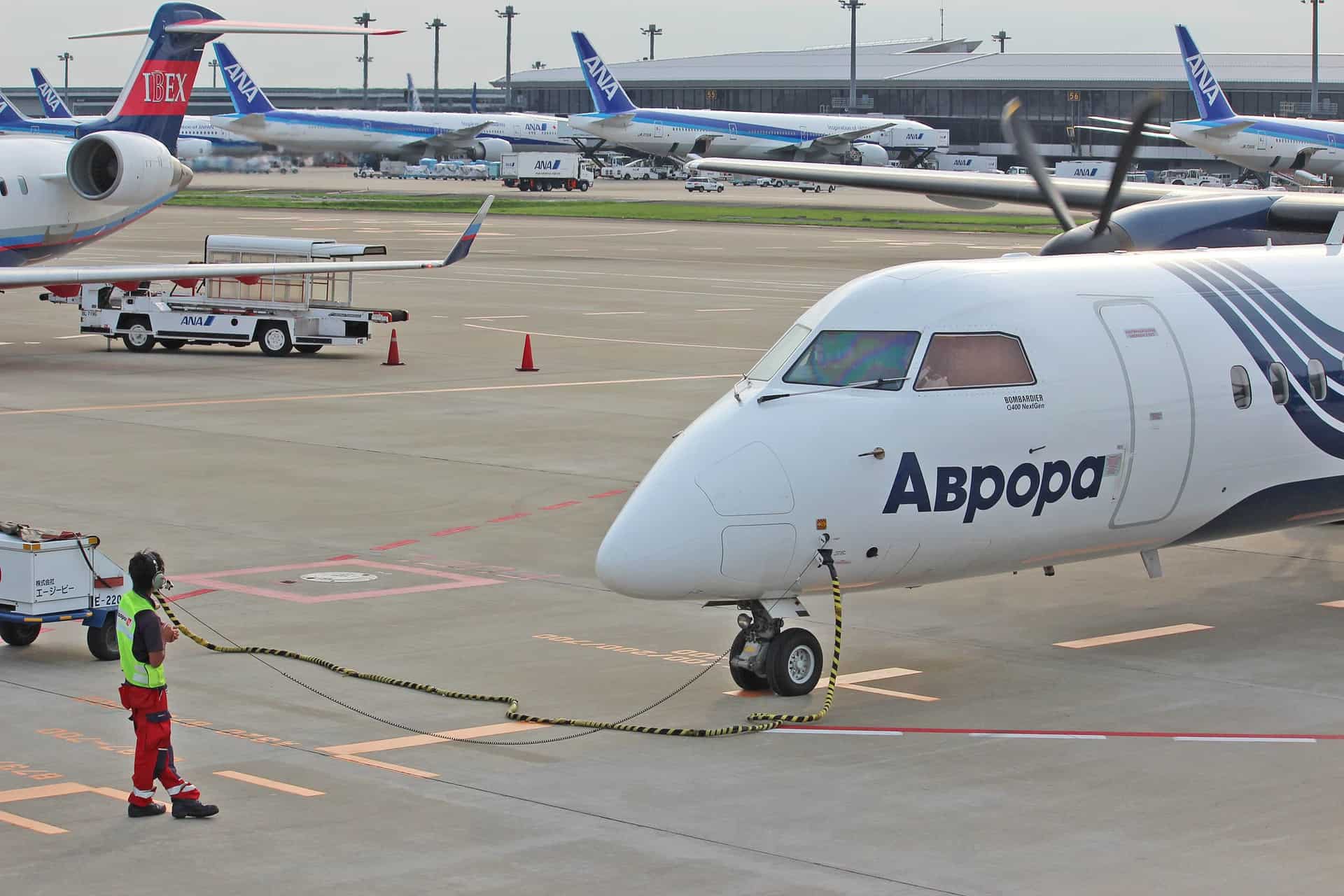Speed has always been a focal point of many with an interest in any motorized form of transport, and aviation is no exception. Want to arrive at your destination rapidly? Book a ticket for one of these fastest passenger planes in the world.
All the way up to the nineties, aircraft manufacturers were trying to increase the speed of their airplanes and with it, decreasing the time it took to cross continents. Speed long had been a great selling point.
Until the speed limits of air travel were found with the Concorde, and it proved to be financially unsustainable. By then, most international travelers would rather sit on the airplane for a few hours more to save thousands of dollars at a time.
Another consideration has been the dramatic increase of fuel prices since the eighties and nineties. Since then, aircraft manufacturers have been forced to change their strategy from focusing on speed, to focussing on fuel economy instead.
That change in strategy means that the fastest passenger plane operating today, which is the Boeing 787 Dreamliner, is only able to reach about half the top speed of the only successful supersonic passenger plane in the nineties, which was the Aérospatiale Concorde.
It also means that the top speeds listed here aren’t usually the speeds at which these planes typically cruise, but are top speeds the planes would be capable of. For them to be fuel efficient, and thus economically profitable, they will cruise at lower speeds.
Table of Contents
9. Boeing 747-8 (614 mph)
Top Speed: Mach 0.88 / 534 knots / 614 mph

The Boeing 747-8 is the latest and most likely last version of the iconic 747 airliner. It is produced in both passenger version as well as a freighter versions under the name 747-8F. It is the largest Boeing aircraft made.
The 747-8 is fitted with the General Electric GEnx advanced turbofan jet engines which were initially designed for the 787. The engine was made smaller to be able to fit in the smaller nacelles of the 747. The powerful engines have proven to be both economical and reliable, with Cargolux surpassing 1 million flight hours in 2017.
The 747-8 Intercontinental, which is the full name of the passenger variant, can carry up to 467 passengers. It is operated by airlines such as Lufthansa, Korean Air, Air China.
So far the model has a total of 154 confirmed orders. It will be the last variant of the 747 made, as airlines are moving toward smaller, more efficient planes such as the Boeing 787 and Airbus A350. However, there is still a backlog of orders to be filled which is expected to be done by the end of 2022.
8. Convair 880 (615 mph)
Top Speed: Mach 0.89 / 535 knots / 615 mph

Development of the Convair 880 began in 1956, and the first model took to the sky over 60 years ago in 1959. At the time, it was the fastest commercial plane in the world.
The Convair 880 was powered by civilian variants of engines also used in fighter jets such as the B-58 Hustler, F-104 Starfighter and MD F-4 Phantom. These engines were in fact very similar, and focussed on performance rather than fuel economy.
The 880 was operated by a number of well known airlines such as TWA, Delta, Cathay Pacific, and Swiss Airlines. However, only 65 were ever produced, and the model is considered a failure by most, including General Dynamics self. It simply couldn’t compete with the Boeing 707, 720 and 727.
7. Convair 990 (620 mph)
Top Speed: Mach 0.9 / 540 knots / 620 mph

The Convair 990 was developed after a contract put out by American Airlines to develop the fastest passenger airliner in the world. Boeing said they couldn’t make a plane faster than the 707, but Convair said they could…
Thus development of the 990 started. Convair had so much confidence in the proposed 990 model, they guaranteed the top speed of the aircraft to American Airlines before it was produced.
Unfortunately the aircraft wasn’t a great success with only 37 being built. The fast cruise speed was about the only pro it had going for itself, and the aircraft was soon out competed by the Boeing 720 and 727.
6. Boeing 747-400 (624 mph)
Top Speed: Mach 0.92 / 542 knots / 624 mph

This incredibly successful passenger plane was first introduced in 1984. From 1989 to 2009, Boeing manufactured a whopping 694 of this 747 variant only, outperforming competitors such as the MD-11 and Airbus A340.
The 400 series incorporated many upgrades over the previous 300 series. The most significant being the glass cockpit, more efficient engines leading to much improved range, as well as a 10% decrease in operating cost.
These improvements made the 400 series a very attractive investment at the time for airlines such as KLM, Singapore Airlines, British Airways, Air France and United Airlines.
In 2020, due to the obvious collapse of the aviation industry, most if not all airlines around the world have decided to retire their fleets of 747-400s earlier than planned.
5. Airbus A380 (736 mph)
Top Speed: Mach 0.96 / 640 knots / 736 mph

The massive A380 is still a sight to behold and most people find it incredible a plane this size can achieve lift-off with such grace as the A380 does. The double decker aircraft is able to transport over 800 passengers at once and has done so for many years now, being introduced in 2007 with Singapore Airlines.
Development of the A380 started way back in 1988 as a way for Airbus to be able to compete with the hugely successful Boeing 747. The project started in the nineties as a joint project between Boeing an Airbus, but Boeing realized early on that the future of air travel was about to change and abandoned development.
In the end, Boeing was proven right. Despite having built 242 of the aircraft, Airbus has stated that it never recouped its investment in the R&D of the A380, a number coming close to $25 billion.
The A380 is powered by four Trent 970-84 turbofan engines, producing 78,000 pound-force of thrust each. These engines are able to propel the biggest passenger airplane in the world to a comfortable cruise speed of 561 mph, and a top speed of 736 mph.
4. Boeing 777 (745 mph)
Top Speed: Mach 0.97 / 647 knots / 745 mph
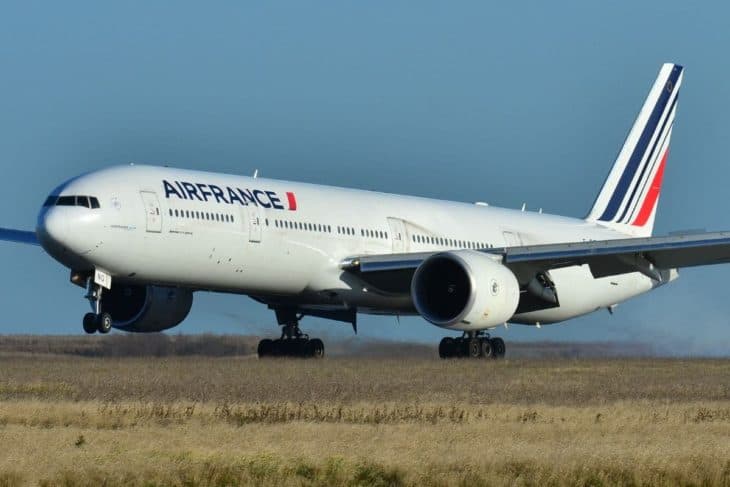
The Boeing 777 is the largest twin jet in the world and can reach a top speed of 745 mph, although it usually cruises at about 554 mph. It is a highly successful fast passenger plane with 1642 being produced as of October 2020.
In the nineties, as Boeing recognized the changing trend of the so called hub-and-spoke flight strategy to the point-to-point strategy, it abandoned development of the A380 joint project and instead crafted plans for the future-proof, twin engine Boeing 777. This decision paid off big time for Boeing.
It was the first Boeing with fly-by-wire controls and competed at the time of introduction with the Airbus A350 and MD-11, but now competes with the much newer Airbus A350 and A330, which is a testament to the huge leap in innovation it made at the time.
3. Boeing 787 Dreamliner (776 mph)
Top Speed: Mach 1 / 674 knots / 776 mph
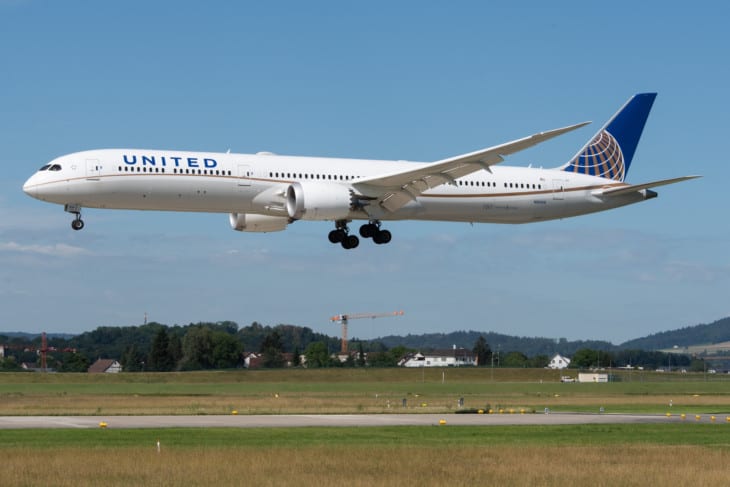
The 787 is Boeing’s state of the art airliner, having an air frame made mostly from carbon fiber composite. The 787 was developed as a more efficient replacement for the 767 and 747 long distance passenger planes.
The first customer was the Japanese All Nippon Airways, ordering the first 50 units, and went into service with said airline in 2011. Since then, the aircraft has proved successful and as of October 2020, 988 units have been built.
The 787 Dreamliner is able to achieve its high cruise and top speeds by either GEnx or Trent 1000 high bypass turbofan engines. It has noise reducing chevrons on its wing tips and raked wingtips to increase fuel efficiency.
The Boeing 787 dreamliner, together with the Airbus A350 represent the trend of smaller, more efficient wide body airliners designed for economic point-to-point flight schedules, which seem to be favored now and in the future.
2. Aérospatiale Concorde (1,354 mph)
Top Speed: Mach 2.04 / 1177 knots / 1354 mph
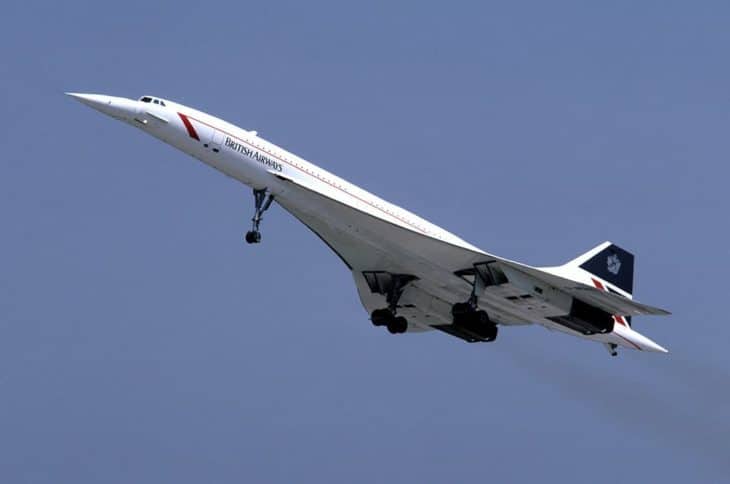
There aren’t many people who haven’t heard or seen the iconic Aérospatiale Concorde with its characterizing flying wing shape. Unfortunately the plane was retired in 2003.
The Concorde is one of two only supersonic passenger planes ever commercially produced. One of the major downsided of supersonic airplanes is the sonic boom created when breaking through the speed of sound. This made it unacceptable for the plane to travel over land masses and it was only really used on transatlantic routes.
Only 20 were to be produced, British Airways and Air France operating 7 each. Finally, the concorde wasn’t economically viable any more. Ticket prices were up to 30 times higher than a regular flight, and thus only in reach for the wealthiest of travelers. They paid the extreme ticket prices to be at their destination much faster, often arriving at the destination in less than half the time of the regular passenger flight.
On 25 July 2000 a Concorde crashed and killed all passengers due to a combination of several catastrophic events. It was the only crash in the entire 27 years of operation. This, along with the loss of faith in the aviation industry after the September 11 attacks in New York City, proved to be unsustainable and meant the end for the Concorde.
1. Tupolev Tu-144 (1,600 mph)
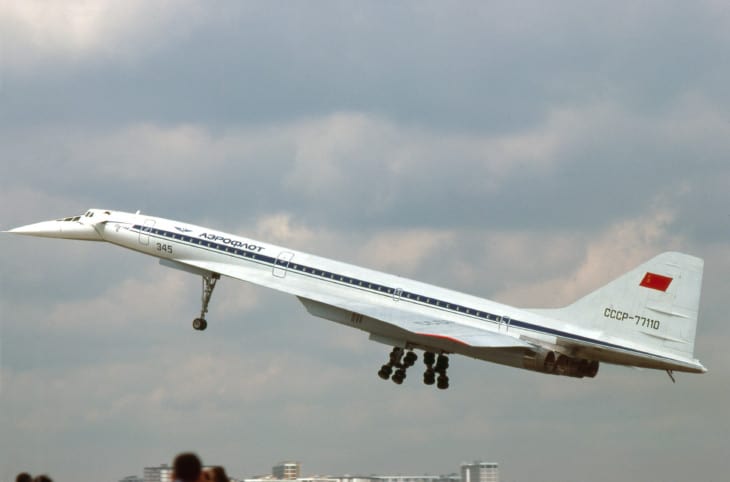
Top Speed: Mach 2.15 / 1300 knots / 1600 mph
The Tu-144 was developed by the Soviet Union at the same time as the Concorde. From the beginning though, it was plagued by unfortunate events.
Development went wrong early on in the process when the second production model crashed at the Paris air show of 1973. It killed all six people on board and eight on the ground.
At the time, there was a fierce competition between development of the French Concorde and the Soviet Tu-144. They were both performing at the air show, and the Concorde had previously done its show flight, and many people thought it was rather dull.
The pilot of the Tu-144 then promised a more exciting test flight. It subsequently performed a maneuver that proved to be too much for the airframe, tearing off the left wing entirely, crashing the aircraft into the ground.
This accident would put a black mark on the aircraft forever, but the Soviets still managed to introduce the Tu-144 into commercial service with Aeroflot in 1975. Three years later it was canceled again after a second Tu-144 crashed.
The Tu-144 remained as a cargo aircraft until 1983. After that it was used in the Soviet Space program as a training aircraft, as well as by NASA until 1999.
Will The Future See Supersonic Air Travel Again?
While the only successful supersonic passenger planes have long been retired, one company has been working hard on the revival of supersonic air travel.
The American company Boom Technology has advanced plans for the Boom Overture. The Overture will be a supersonic passenger plane, carrying between 65 and 88 passengers and it will do so at Mach 2.2 / 1688 mph.
The Overture will be built out of fiber composite materials like the 787 Dreamliner, and is planned to make its first commercial flight in 2029.
Related Posts
